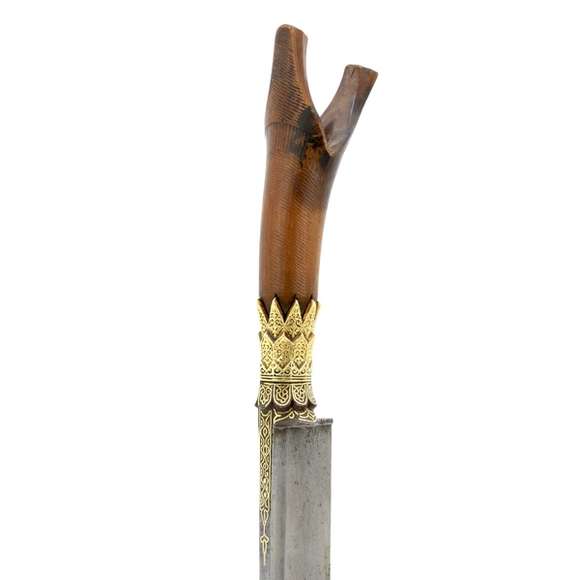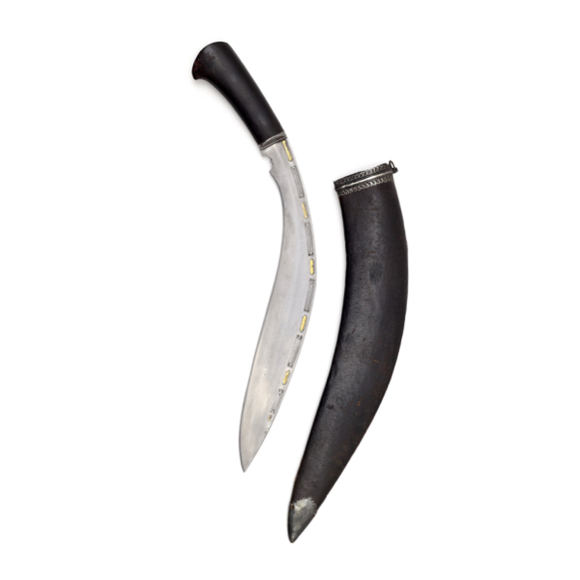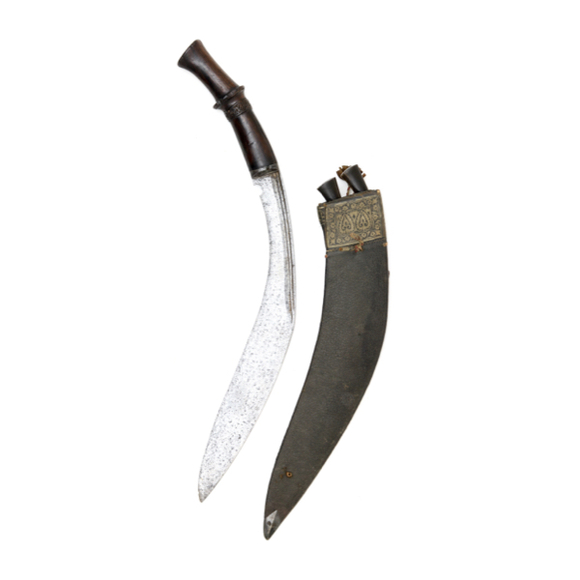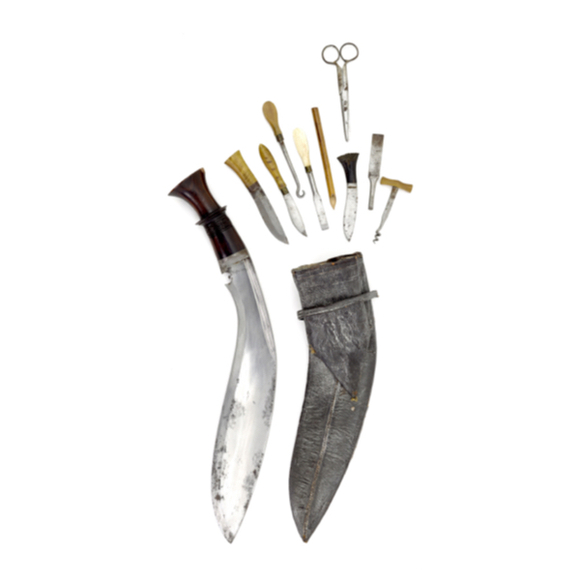Its blade with very fine and complex pamor, brought out by a polish.

91.3 cm
73 cm
Base 6 mm
Middle 4 mm
5 cm from tip 1.5 mm
Base 32 mm
Middle 31.5
5 cm from tip 24 mm
684 grams
9.3 cm from hilt
Iron, steel, pitch
Aceh, Sumatra
19th century
From the collection of Mr. B. Medze.
Introduction
Peudeueng is the Acehnese variety of the word pedang which simply means sword. In north Sumatra, it is usually applied for curved sabers of foreign origin or locally made sabers with strong foreign influence.1
Acehnese peudeueng often come with basket hilts, called hulu meu apet. These were strongly inspired by Indian basket hilts of similar form.
They were expensive items of status and said to have been mostly worn by officers and the like.
This example
Of classic form, it has a locally made steel blade that was modeled after European military sabers. The local hand shows in the fine pattern welding that can be observed in the steel through the old patina.
Blade in good condition, with crisp geometry and free of pitting. One chip off the edge near the tip, probably from action.
The hilt is an all-steel basket hilt, modeled on early Indian hilts. It is adorned with engraved floral details.
It comes with a nice custom steel stand to display the sword upright. No scabbard.













With a very fine Nepalese blade, but kard-like hilt and scabbard.
Early type with very shallow notch in the blade and little flare in the pommel.
20th century military khukurī with many different tools in its back pocket.






